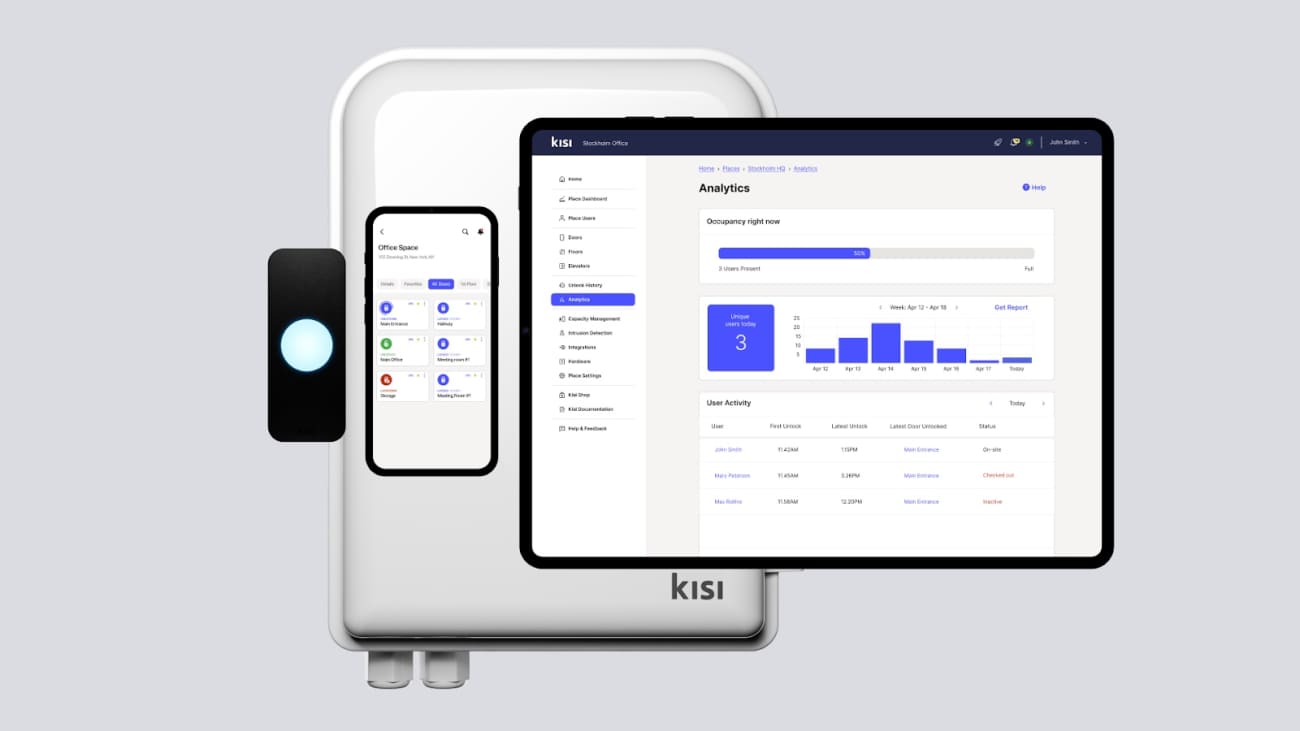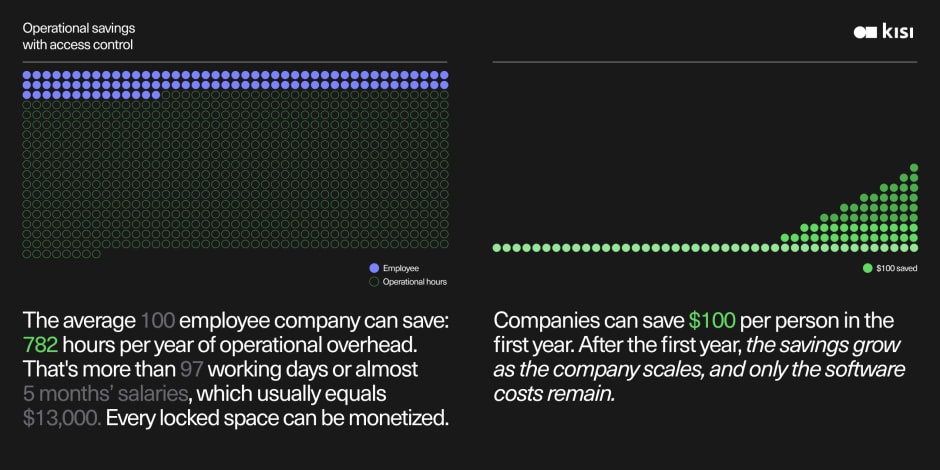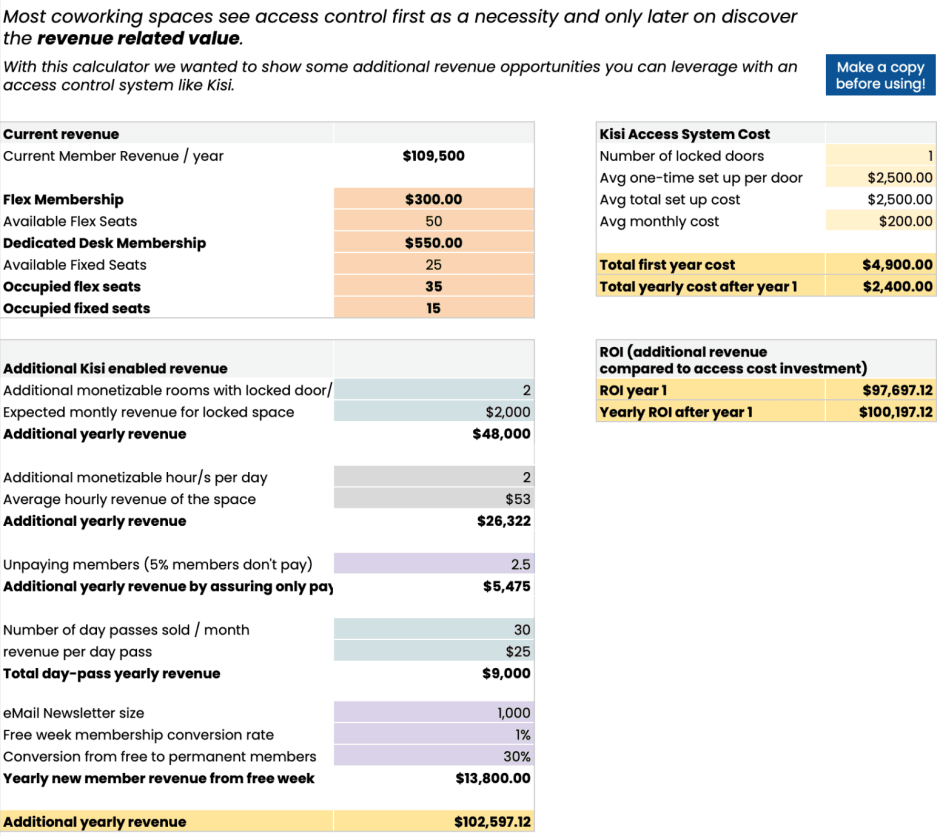Doors are essential features of all facilities, and yet, we barely give conscious thought to what they do, how they make people feel, and just how much they can boost our business.
The front door experience can set the tone of the whole encounter. Having access privileges from day one can make the new hire feel less stressed. Enabling the new partner to unlock the door with a QR code will reassure and excite them about the forward-thinking company they get to collaborate with.
Membership businesses, including coworking, flex spaces, and gyms are even more impacted by the entry experience and access control systems. To monetize spaces they need to lock them and ensure only paying members can gain access to all the amenities they subscribe to.
Keep the doors unlocked, employ additional personnel, or automate access control? What is the best solution for you? Read the rest of the article to find out as we explore the challenges of manual access control, the benefits of automating access control and the key features. We’ll also enable you to easily calculate the savings of operational costs and possibilities for additional revenue streams.

Understanding access control #
To understand access control, we need to define it first: Access control is a security process that determines who can open the door to gain entry by verifying identity. It ensures that only the right people, like your employees, partners, or members, can get in and keeps everyone else out, ensuring your place stays safe.
Modern, automated access control systems do much more than the basic door entry functionality. You can explore all the access control types in more detail, but what's important for now is to establish that there are mechanical and electronic access systems.
Mechanical or manual systems are the simplest form of access control. The fundamental mechanical locking system restricts people without a key to enter, making it simple and safe enough for us to still have it in our homes. If your security is mainly focused on protection and providing a physical barrier to intruders, mechanical locking solutions might make sense.
Contrary to mechanical lock and key systems, electronic access control (EAC) systems are digital networks that control access to enter or exit a secured space. The components they include, like keyless credentials, credential readers, and an electronic controller, expand their functionality from protection to automating operations and supporting monetization.
More and more coworking and other membership businesses with high turnover, varied membership tires, and 24/7 access possibilities turn to automated access control to reduce operational overhead, and empower Community Managers to focus on building a thriving coworking culture.

The challenges of manual access control #
Finding your key in the bag and unlocking the door is one of the most straightforward, everyday processes. Yet, it can get stressful. Just think about all the times you thought you lost your key or the times you had to go back and check if you actually locked the door.
Implications on businesses for using manual access systems are much more serious than replacing the lock when you lose the key or climbing a few flights of stairs to ensure you’ve locked it. Manual systems hinder operational efficiency, security, scalability, ultimately affecting revenues.
Labor intensive #
Not having a modern access control system in place means your staff will spend a lot of time issuing physical keys as well as maintaining and updating access lists. The more employees, visitors, or members you manage, the more time-consuming and resource-intensive it will be.
In coworking and flex spaces, for instance, where the member base is dynamic and constantly changing, the staff must continuously issue and revoke access credentials as members join, leave, or change their membership levels. The added administrative burden can detract personnel from more value-added activities, such as community building and member support.
Security risks #
Manual systems are prone to human error. Just think about how many keys you have to places you no longer frequent that probably can still be unlocked. You might even have a few active credentials to old workplaces. Failing to revoke access can lead to security breaches and unauthorized access, posing risks to people, expensive equipment, and sensitive information.
When multiple companies and individuals operate in close proximity, any lapse in access control can compromise the safety and privacy of all members. Ensuring that only authorized members have access to specific areas or resources is crucial, yet difficult to maintain consistently through manual processes.

Operational inefficiency and higher costs #
Since February 2020, average hourly earnings rose 22.3%. Having to manually manage access requires staff to be available around the clock, which can lead to increased labor cost. On the other hand, the repetitive nature of these tasks can divert resources from other critical business functions. The need for constant supervision, especially in coworking and other spaces that don't operate 9 to 5, can lead to higher staffing costs by introducing extra shifts and working hours.
Scaling challenges #
As businesses grow, managing access control becomes more complex. More employees, locations, and varying levels of access rights make it challenging to maintain effective operations while keeping the facility safe. The need for automated access control is even more evident in membership businesses that can profit from the different access tires.
Multi-location coworking spaces are a great example. As the member base expands and new locations are added, keeping track of who should have access to which location, when, and for how long is getting more challenging. This can result in bottlenecks and administrative overload, potentially leading to delays in granting access or security breaches.
Lack of data and monitoring #
The lack of data and real-time monitoring in manual access control makes it difficult for businesses to respond swiftly to security incidents or track access patterns effectively.
Reliable access data can result in high ROI in hybrid workplaces and coworking spaces, where member access varies daily. Occupancy data and workplace analytics are crucial in optimizing space utilization.
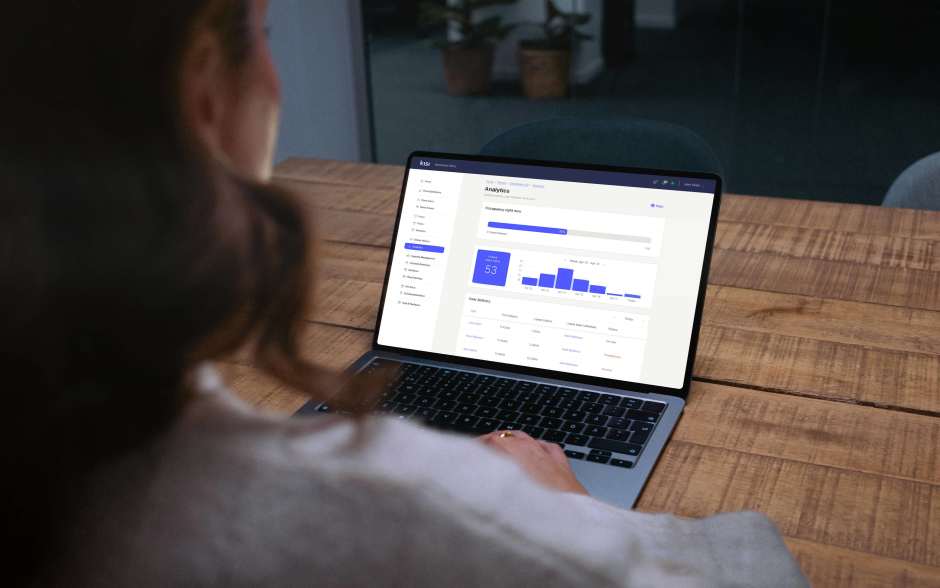
Benefits of automating access control #
From automating mundane processes like issuing keys or cards to enabling new revenue streams and enhancing security, modern access control systems are becoming a necessity instead of a nice to have. According to Optix's “The State of Automation in Coworking and Flex Spaces 2024” report, 44% of spaces use access control to streamline their operations. Let’s take a look at the biggest advantages of automating access control.
Streamlined operations #
Automated access control systems ensure streamlined processes for both admins and users. Admins can remotely grant and revoke access privileges and set automated access schedules adapted to different user groups or doors. Some access systems, like Kisi, even account for holidays, so you can rest assured that your access is truly on autopilot. Modern access platforms also enable admins to monitor and receive mobile push notifications of relevant access activities to ensure smooth operation.
Users on the other hand, can unlock only the doors they need during pre-set time periods. They don’t have to worry about remembering to lock the door or forgetting their credentials at home. Spaces with big traffic flow, like gyms, coworking, and flex spaces, can benefit from real-time occupancy alerts for members and guests. Users will be grateful to avoid the busy times, while admins can work on strategies to promote the slower hours.
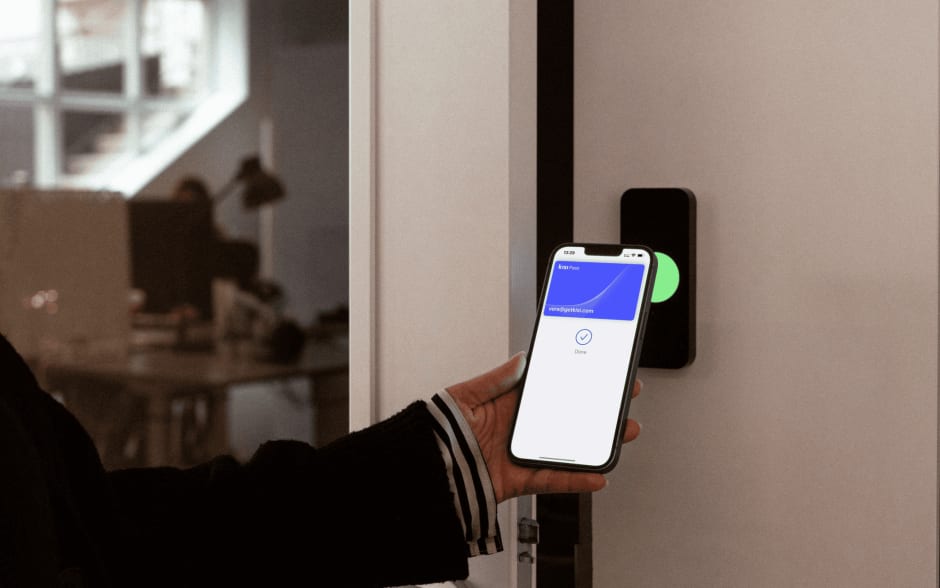
Improved security #
By automating your access control, you will eliminate one of the most common security threats: Unrevoked credentials, such as forgotten keys to lost or stolen cards. You will no longer have to chase employees or members to get the key back or write down constant reminders to do so.
For an additional layer of security, you can add a sensor to your access system and get notified of intruders attempting to breach your secured spaces. Automated access systems, like Kisi, can also alert you in real-time when unauthorized access may be taking place, like if a door is held, propped, or forced open.
These access systems also enable you to respond within seconds to a security emergency wherever you are. You can remotely lock down doors or initiate lockdown on all secured doors with a few clicks. What’s more, you can review the access events digitally to audit and mitigate potential breaches.
Cost reduction and new revenue streams #
We already discussed how labor-intensive manual systems can be. Automated systems, on the other hand, cut down on the hours spent manually granting access, including making lists, issuing and de-issuing credentials, unlocking the door for visitors, and ensuring the delivery or cleaning staff are buzzed in outside of working hours. Automated access systems also reduce the need for additional physical security measures, like security guards or cameras.
Automated access systems enable additional revenue streams, which can increase the ROI. For instance, if you manage a coworking space, you can offer extended hours or even 24/7 access without hiring additional staff. If you are struggling to get people back to the office, you can consider transforming your workplace into a shared workplace. Let's see just how much you can save or get.
Calculate your operational savings with access control #
Let’s take a look at the average hours in a year a 100 employee company will spend doing tasks that can be automated with access control:
- Provisioning door access: 17.5 hours saved (30 minutes per employee, assuming 20% growth per year)
- De-provisioning door access: 5 hours saved (20 minutes per employee, assuming 15% fluctuation rate)
- Access tracking: 10 hours saved (assuming we’ve needed to track access 20 times per year averaging 30 minutes per analysis)
- Visitor management: 750 hours saved per year (assuming the company has 10 daily visitors and it takes 15 minutes for someone to announce them, set up access, note it down, etc.)
That’s more than 782 hours per year of operational overhead saved, which would mean more than 97 working days or almost 5 months’ salaries. If the average front desk salary is $31,200, that would mean you’ll be saving around $13,000 for the average 100 employee company. If your company has 1000 employees, the savings can be tenfold. Considering the IT team is the one who usually takes care of provisioning and deprovisioning access, the savings would be substantially bigger regardless of company size.
We wouldn’t know how much we’re saving if we don’t know the access control system costs. The cost depends on a lot of factors, of course, like already having working locks or legacy readers. The average cost for setup, including the first year of operation, is $3,350 USD, meaning the average 100-employee company can get around $10,000 ROI in the first year or $100 per person. Considering you will only have the software costs and your company will scale with time, the ROI should increase each year.
Additional revenue streams for coworking and other membership spaces #
Besides saving on operational overhead, membership-based businesses, like coworking, shared workspaces, and gyms can monetize every locked space, especially if it’s automated. For example with modern access systems like Kisi, coworking spaces can not only save the $13,000 a year in operational overhead, but can offer extender hours or services.
The math here depends very much on your space, so we invite you to take advantage of our coworking ROI calculator, to see just how much you can benefit from automated access control. Use it to calculate your current revenue, and then the additional revenue you can make from additional locked rooms, extended working hours, or offering daily passes and free weeks with Kisi.
Using the calculator you can clearly see the additional revenue you can get from automated access control. Extending working hours with automated access schedules based on membership tiers is super simple and a sure way to get your ROI back even in the first year.

Key features of automated access control systems #
To reduce operational overhead you need to ensure the automated system you choose has the following features:
- User-friendly dashboard and centralized management: Most cloud-based access systems enable you to manage all locations, doors, and users remotely from a single pane of glass. Modern access systems like Kisi are always working on enhancing the software, making it even more intuitive, and providing additional features over OTA updates for even more operational savings.
- Mobile access and management: Saving time, streamlining operations, improving user experience, and extending working hours are just some of the benefits of mobile access. The possibility of getting notified and reviewing important access events on your phone enhances security by enabling you to mitigate potential incidents even on the fly.
- Integrations: To get the most out of automating access control you need to pick an access control system that integrates with your existing hardware and software, including SSO and identity management, security cameras, data analytics tools, visitor systems, and if needed, industry-specific software like coworking or fitness apps for more control with less manual overhead.
- Future-proof and scalable: Cloud-based access control systems with fully managed over-the-air (OTA) updates will enable your devices and software to be constantly upgraded. The ability to add new devices, users, locations, and apps without compromising system performance or security ensures that as your organization grows, your security infrastructure can expand effortlessly alongside it, maintaining operational continuity and efficiency.
- Reporting and analytics: For compliance and potential incident resolution, your access system should enable you to review a thorough and chronological record of every access event. You should be able to export these advanced and customizable reports to uncover deep insights, like detailed user access analytics to monitor and analyze user interactions within your facility and space utilization analytics, including occupancy rates, user behavior, and detailed activity heatmaps.
Enhance security and reduce operational overhead with Kisi #
Besides enhancing security, automated access control systems are essential in streamlining operations so you can reduce operational overhead. What most businesses tend to overlook is that access control can open up additional revenue streams. While for the regular office, it can mean improved space utilization, membership-based businesses like coworking spaces can easily extend working hours, offer additional services, and introduce new monetized spaces.
Not sure how an automated access control system can help you reduce operational overhead? Contact our security experts for a customized demo and a solution that works for your business.

Vera Eftimovska
Senior Content Strategist at Kisi, eager to craft the next access control story. Connecting people and spaces with person-centered yet reliable, data-based security content.



